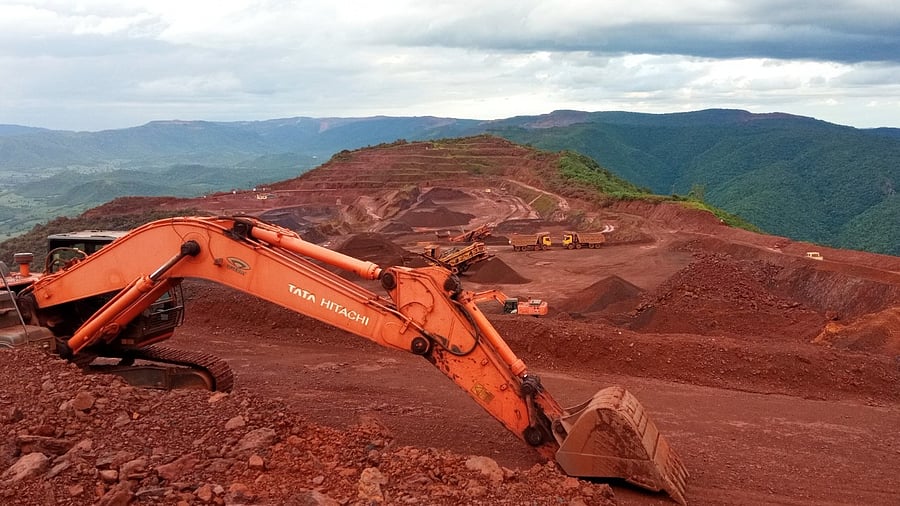
Representational picture of mining
Credit: DH Photo
Bengaluru: Mines that were ordered to undertake rehabilitation and reclamation (R&R) of mining-affected areas in Ballari, Vijayanagara, Chitradurga and Tumakuru by the Supreme Court more than a decade ago have yet to do so, the Central Empowered Committee (CEC) has found.
In view of the devastation caused to the natural resources, the SC in January 2012 ordered that R&R "shall start immediately". Two months later, the CEC laid down the guidelines, which were accepted by the Federation of Indian Mineral Industries.
Besides preventing pollution from dumps and pits, R&R work includes biodiversity conservation, afforestation and soil moisture conservation, physical and social infrastructure development and others.
In its latest report submitted to the SC earlier this month, after a lapse of 13 years, the CEC said the R&R progress on the ground has not even started in several mines.
"Of the 64 category B (partly illegal) mines, guarantee money (a deposit mandated by court) has been recovered in 45 cases. The remaining 19 leaseholders have not paid the guarantee money, and sale of ore from these leases shall not be permitted," the report said.
Even among the 45 leases where the guarantee money was recovered, 12 have not completed the R&R works. "Due to escalation works, the available guarantee money is insufficient to complete the remaining work," the report said, recommending that the sale of ore from such leases "shall not be permitted" and the state government may sell the same to recover the R&R costs.
Among the 44 Category A (legal) mining leases, "those that have not resumed mining" have failed to implement the R&R plans while the illegal (Category 'C') mines where ore extraction has begun post auction, the work is yet to start. The committee recommended that the state government may recover the cost of the R&R works by selling the ore.
The CEC report comes in the wake of several mining companies approaching the apex court for permission to sell the low grade iron ore, including some subgrade ore that has been dumped in mounds ("waste dumps").
R K Sunil Kumar, who studied the impact of mining on Sandur's natural resources between between 2011 and 2016 for his PhD from University of Mysore, said the devastation was visible at Narihalla reservoir (built in the northeast of Sandur for drinking water and irrigation) while testing groundwater in 25 villages.
"One can only imagine the amount of chemicals and heavy metals that would have flown into the reservoir and the groundwater. The mining pits go as deep as 150 to 200 metre. In several pits, they spend hours draining the water with large pumps. Narihalla was already filled with silt by 2016. But that is visible. What is invisible is the groundwater pollution, as the aquifers run for about 60 to 70 sq km," he said.
Sreesaila Aladahalli of the Jana Sangrama Parishath said the water in the reservoir resembles red oxide in colour. "The water that is treated and supplied to us also is red," he said.
Aladahalli said people in Bhujanganagara, Lakshmipura, Narasapura, Navilatti, Narayanpura, Ramgad and several other villages have similar complaints.
Willful disobedience
Among 45 leases where the guarantee money was recovered, 12 have not completed R&R works Among illegal (Category 'C') mines, where ore extraction has begun post auction, R&R work is yet to start Committee recommended the state govt to recover the cost of the R&R works by selling the ore CEC report comes in the wake of several mining companies approaching the apex court for permission to sell low grade iron ore